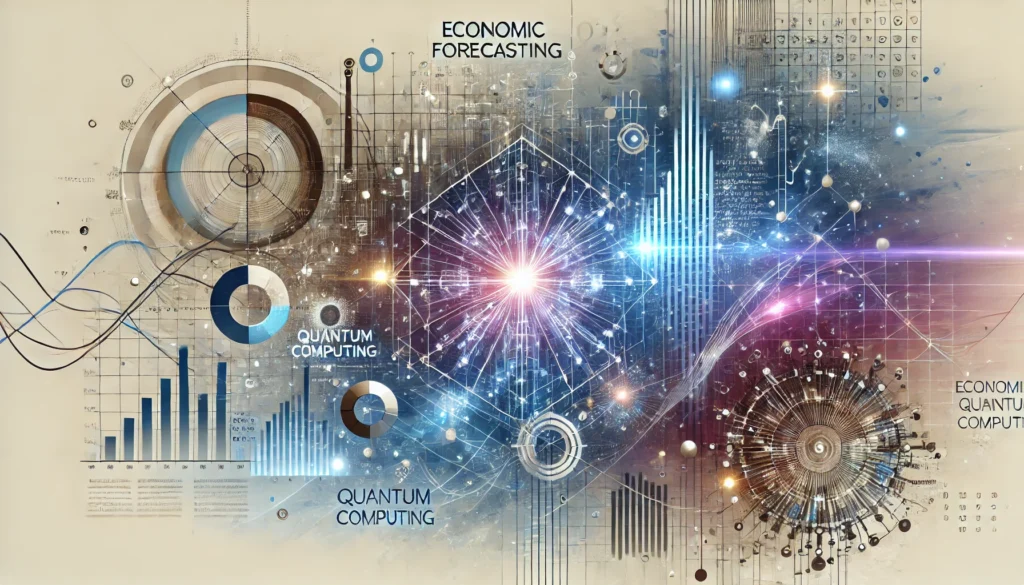Physical Address
304 North Cardinal St.
Dorchester Center, MA 02124
Network
Physical Address
304 North Cardinal St.
Dorchester Center, MA 02124
Network

Making predictions about the future, whether it be regarding the environment or economics, necessitates the use of advanced models capable of dealing with complex systems that are interconnected. Models in climate science work by combining physical, chemical, and biological processes to estimate what weather conditions will be like in the future. Similarly, forecasting inflation in economics involves studying intricate economic systems as well as market behaviors and socio-economic factors. Both fields face significant difficulties due to their complexity and dynamism; however, quantum computing together with interdisciplinary modelling methods could greatly improve on accuracy in these areas.
Climate modelling and inflation forecasting are both examples of making predictions within highly complex systems. Such systems are characterized by many variables which interact with each other through feedback loops thereby creating non-linear relationships that make accurate prediction difficult.
Climate models simulate the Earth’s climate system by integrating interactions between the atmosphere, oceans, cryosphere (ice), and biosphere (living organisms). These models need to take into account a wide range of processes ranging from large-scale atmospheric circulation patterns down to small-scale cloud formation or ocean currents. Moreover, these processes are so intertwined with one another that they require integration across different spatial scales as well as temporal scales while also incorporating physical chemistry biology.
Inflation forecasting refers to predicting changes in inflation rates over specified periods typically through examination of economic indicators like interest rates employment figures commodity prices consumer spending patterns etcetera. The economy is influenced by various factors such as market behaviour government policy global trade dynamics or unexpected events like pandemics or geopolitical conflicts hence there being many challenges towards achieving accurate inflation predictions because all these variables are interconnected very sensitive .
| Challenge | Climate Modeling | Inflation Forecasting |
|---|---|---|
| System Complexity | Integrating physical, chemical, and biological systems | Analyzing economic systems, market behaviors, and socioeconomic factors |
| Data Requirements | Vast datasets from satellites, sensors, and observations | Economic indicators, market data, and social trends |
| Computational Demands | High-resolution models require immense computational power | Complex algorithms and large datasets strain computational resources |
| Uncertainty Management | Managing uncertainties in climate projections | Dealing with market volatility and unpredictable events |
Advanced modelling techniques are used in both climate modeling and inflation forecasting to handle complexity plus dynamic nature of the systems under study that are meant to be predicted. These techniques involve use of complex algorithms, data assimilation methods and computational tools which aid in integrating large datasets for analysis.
Data assimilation is important in both fields for improved forecast accuracy. In climate modeling, data from various sources e.g satellite observations weather stations ocean buoys etcetera are combined with models so as to have a better representation of what the climate system looks like currently. Also, in inflation forecasting real time economic data continuously gets incorporated into economic models thus refining predictions made using these models.
Example: Ensemble forecasting is used in climate modelling where multiple simulations are run with slightly different initial conditions to account for uncertainties in the data and model structure. Similarly, multiple economic scenarios can be simulated in inflation forecasting to explore different potential outcomes.
Both artificial intelligence (AI) and machine learning have proven effective at boosting predictive modelling capacity across various disciplines including climate science as well as economics. These technologies have the ability to process large volumes of information detect patterns and make accurate predictions by updating models based on new inputs of data they receive
Climate models are downscaled from global to regional scales using artificial intelligence in climate science for more detailed forecasts of local climate impacts. Inflation forecasting, on the other hand, can be refined by machine learning algorithms through analyzing historical economic data for leading indicators of inflation.
With its capacity to process large amounts of information and solve complex problems faster than ever before possible, quantum computing could revolutionize both climate modeling and inflation forecasting. By utilizing principles from quantum mechanics, a quantum computer can simultaneously carry out multiple calculations thereby increasing computational efficiency by many orders of magnitude and enabling much more accurate predictions.
In climate modeling, quantum computing can increase model resolutions spatially as well as temporally which will enable them simulate localized events like cloud formation, ocean eddies or land-atmosphere interactions more accurately. Such an improvement would lead to better climate predictions especially in areas that are currently poorly represented by global models.
Quantum computing may also enhance inflation forecasting by allowing us to simulate complex economic systems with larger datasets and running more sophisticated algorithms that capture how different economic variables interact. This could enable long-term inflation forecasts become more accurate while at the same time helping policy makers make informed decisions.
For example: It could consider a wider range of factors and potential outcomes than classical computers allow when investigating what impact various monetary policies might have on inflation; this would provide central banks with better tools for controlling inflation and stabilizing economies.
Given their shared complexity levels as well computational requirements – which often involve processing huge volumes of raw information – there is great potential for cross-disciplinary collaboration between these two fields i.e., between those involved in weather prediction/climate change modeling on one hand; and economists working towards improving estimates about future price levels (inflation) on the other.
The challenges of prediction in complicated systems, like those in climate science or economics, are profound. But modeling methods have improved greatly over time with the help from new technologies such as AI and Quantum computing which may be able to solve these problems that can improve forecasting. This means that we now have an opportunity to make more accurate predictions about what will happen in our environment and economy by bringing together knowledge from different areas.